Space
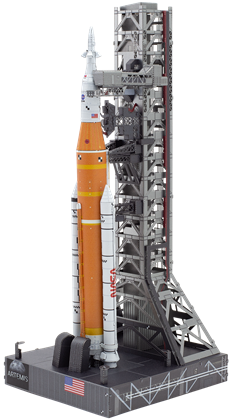
PS2019
Artemis Moon Rocket
3.5 Sheets
Challenging
Artemis, the moon goddess in Greek mythology, personifies NASA's efforts to return astronauts to the lunar surface and beyond. The Space Launch System is the American super heavy-lift rocket that will be used to get us there. At launch, the SLS rocket with crew will weigh 5,750,000 pounds.
$0.00

PS2016
Apollo 11 Astronaut
2.5 Sheets
Challenging
On July 20, 1969, Astronauts Neil Armstrong and Edwin (Buzz) Aldrin became the first humans to set foot on the Moon. Their NASA space suits allowed these astronauts to explore the lunar surface for over two hours in temperatures ranging from -183 to 106 degrees Celsius. Armstrong and Aldrin then boarded the lunar module, rejoined fellow astronaut Michael Collins aboard their command module, and returned safely to Earth.
$0.00
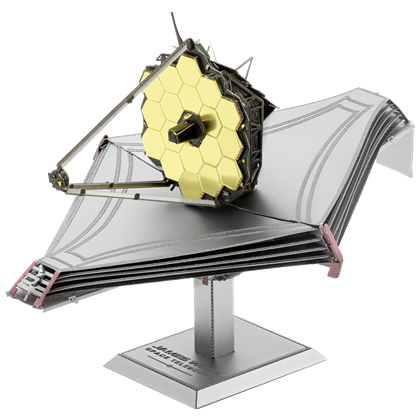
MMS497
James Webb Space Telescope
2.75 Sheets
Moderate
The James Webb Space Telescope, launched December 25, 2021, is the largest and most powerful telescope ever deployed. This $10 billion telescope was designed to collect light in the near-infrared spectrum which is the optimum wavelength to allow for the detection of very distant objects. In fact, the telescope allows astronomers to peer back in time to within 180 million years after the Big Bang which is even before the first galaxies formed!
$0.00

MMS465
Mars Rover Perseverance & Ingenuity Helicopter
Challenging
4.5 Sheets
Perseverance launched July 30, 2020, enroute to Jezero Crater, Mars. Perseverance features a plutonium power source and a variety of instruments to aid the rover in its mission to seek signs of previous life on Mars, as well as collect data to further aid future manned missions there.
Ingenuity, the 4 pound helicopter that was launched with Perseverance, features four specially made carbon-fiber blades, arranged into two rotors that spin in opposite directions at around 2,400 rpm – many times faster than a helicopter on Earth. It is a separate experiment from the rover and is intended to demonstrate technologies needed for flying in the Martian atmosphere.
Ingenuity, the 4 pound helicopter that was launched with Perseverance, features four specially made carbon-fiber blades, arranged into two rotors that spin in opposite directions at around 2,400 rpm – many times faster than a helicopter on Earth. It is a separate experiment from the rover and is intended to demonstrate technologies needed for flying in the Martian atmosphere.
$0.00

ICX227
Space Shuttle Launch Kit
3 Sheets
Moderate
Over 15 stories tall, the external tank flanked by two booster rockets, enabled the space shuttle to escape Earth’s gravity and send it into orbit. The two booster rockets would burn 9 tons of fuel per second, at a velocity of 3000 miles per hour.
Shuttle nameplates included:
Atlantis, Discovery, Endeavor and Enterprise.
Shuttle nameplates included:
Atlantis, Discovery, Endeavor and Enterprise.
$0.00
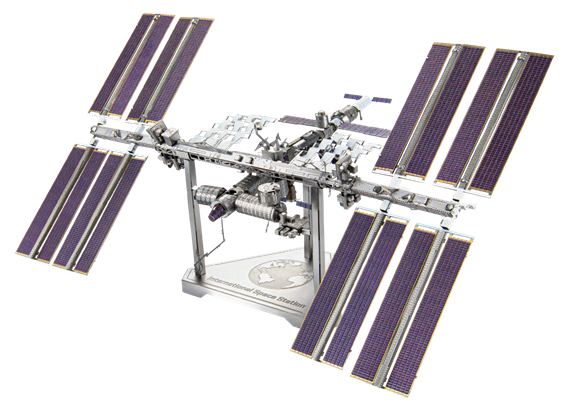
ICX140
International Space Station
3 Sheets
Challenging
The International Space Station (ISS) is a low-orbit research laboratory, housing astronauts from many nations since November 2000. The ISS is home to research projects such as the search for dark matter and the effects of microgravity on living organisms.
The ISS is approximately 356 feet (109 m) wide (longer than a football field) and orbits the Earth over 15 times per day.
The ISS is approximately 356 feet (109 m) wide (longer than a football field) and orbits the Earth over 15 times per day.
$0.00

MMS211A
Space Shuttle Atlantis
2 Sheets
Moderate
Is the fourth operational and the second-to-last Space Shuttle built. Atlantis lifted off on its maiden voyage on October 3rd 1985 and became the first Space Shuttle to launch an interplanetary probe to Venus in 1989.
$0.00
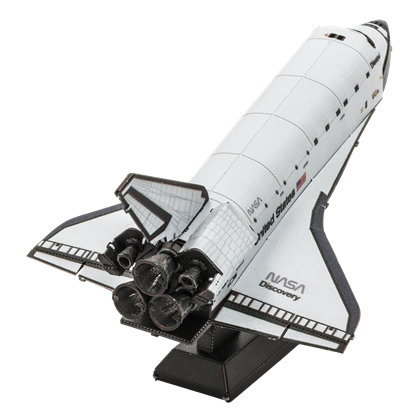
MMS211
Space Shuttle Discovery
2 Sheets
Moderate
Was the third NASA orbiter to be built. It first launched August 30, 1984 and remained in service for more than 27 years. Among its many accomplishments was the work done on the International Space Station and carrying the Hubble Space Telescope into orbit.
$0.00

MMS193
InSight Mars Lander
2 Sheets
Challenging
InSight, short for Interior Exploration using Seismic Investigations, Geodesy and Heat Transport, is a robotic lander designed to study the deep interior of the planet Mars. InSight launched on May 5, 2018 and successfully landed on Mars on Nov. 26, 2018.
Its finding are expected to shed light on the processes responsible for the formation of Mars, Earth, and even rocky exoplanets more than 4 billion years ago.
Its finding are expected to shed light on the processes responsible for the formation of Mars, Earth, and even rocky exoplanets more than 4 billion years ago.
$0.00

MMS173
Boeing™ Starliner™
1 Sheet
Easy
Boeing's Crew Space Transportation (CST)-100 Starliner spacecraft is being developed in collaboration with NASA's Commercial Crew Program.
The Starliner was designed to accommodate seven passengers or a mix of crew and cargo for missions to low-Earth orbit.
The Starliner was designed to accommodate seven passengers or a mix of crew and cargo for missions to low-Earth orbit.
$0.00

MMS168
Apollo CSM with LM
Challenging
4 Sheets
The Apollo 11 moon landing required two spacecraft- The lunar module (LM) and command service module (CSM). Once in lunar orbit, the two would separate so the LM could land while the CSM waited in orbit. After launching from the lunar surface, the LM’s ascent stage would rendezvous and dock with the waiting CSM, then the astronauts would transfer back into the main spacecraft and head home. It sounds nearly impossible but that’s the way it was July 20, 1969.
$0.00

MMS167
Apollo Saturn V with Gantry
2 Sheets
Moderate
Saturn V: President Kennedy said, “we choose to go to the moon” The Saturn V is how we got there! This 3-stage expendable rocket was developed by NASA to support the US Apollo space program between 1967 and 1973. The “V” referenced the five giant F-1 rocket engines clustered at the bottom of the Saturn V’s first stage.
$0.00

MMS122
VOYAGER
1.5 Sheets
Moderate
The Voyager Spacecraft: Consist of two robotic probes that were built by Jet Propulsion Laboratory in Southern California and launched by NASA in 1977. Their primary mission was the exploration of Jupiter and Saturn. Both Voyagers are now tasked with exploring interstellar space.
$0.00

MMS094
APOLLO LUNAR ROVER
2 Sheets
Challenging
Was affectionately known as the moon buggy. It was used on the moon in the last three missions of the American Apollo program (15, 16, 17) during 1971 and 1972. Powered by only two silver-oxide batteries, the Apollo 17 was able to drive for 35.74 km (22.21 miles) across the surface of the moon.
$0.00

MMS093
HUBBLE TELESCOPE
1 Sheet
Moderate
Was launched into low Earth orbit April 24th, 1990. Operating outside the distortion of the Earth’s atmosphere it is able to take extremely high-resolution visible-light images. Hubble has recorded some of the most detailed visible-light images ever, allowing a deep view into space and time.
$0.00
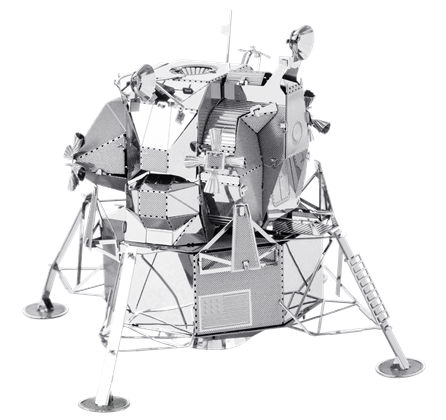
MMS078
APOLLO LUNAR MODULE
2 Sheets
Challenging
Was a two part spacecraft used to carry a crew of two from lunar orbit to the surface of the moon and back. The descent stage served as the launch pad for the ascent stage plus it housed the landing gear, engines and fuel needed for landing. Six such craft successfully landed on the Moon between 1969 and 1972.
$0.00
- 1
- 2















